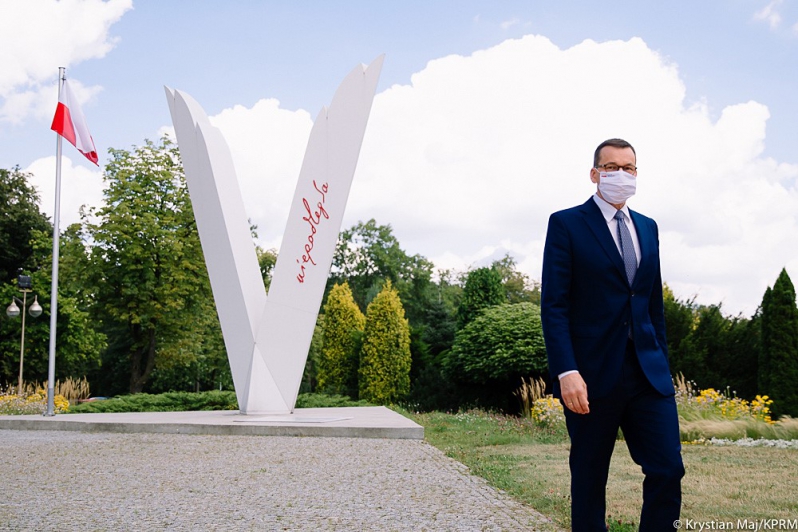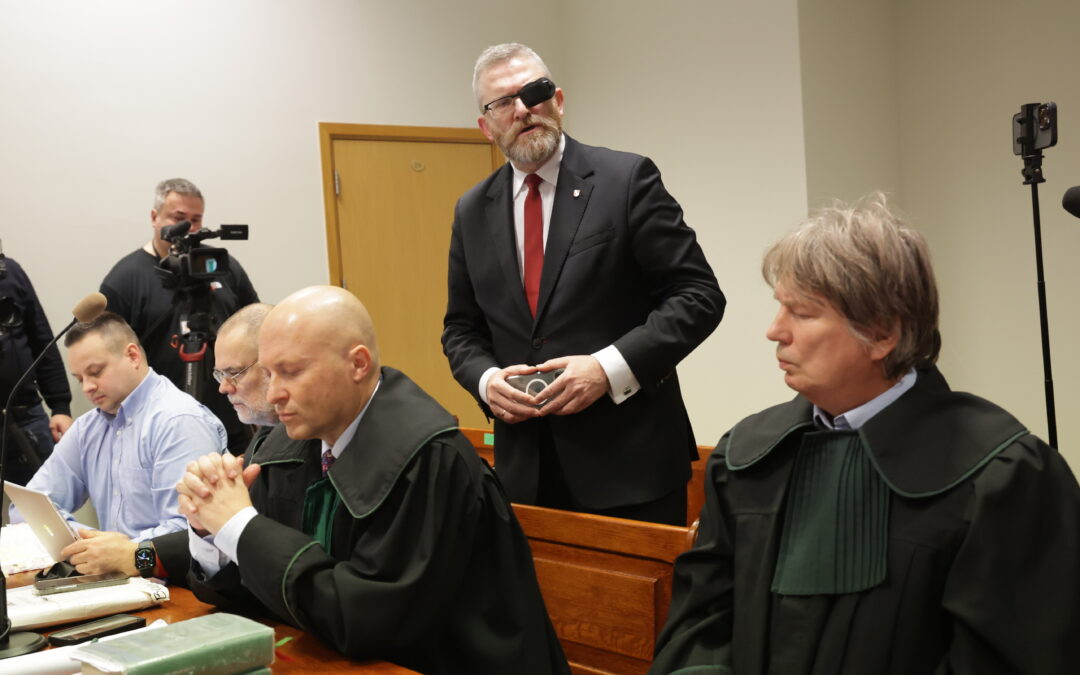The government’s offer to buy a Polish flag and flagpole for each municipality in the country is to be paid for with money designated for combating COVID-19, it has been discovered.
Funding for the patriotic programme, which is expected to cost at least 6 million zloty (€1.3 million), was incorporated into a government resolution amending the act designed to deal with the consequences of the pandemic.
Meanwhile, the deadline for the public to vote in favour of having a flag installed in their district has been extended after less than half of the country’s municipalities gathered enough support to qualify.
Prime Minister Mateusz Morawiecki launched the scheme – called “Under the white and red”, in reference to Poland’s national colours – in August. Its aim, he said, was to encourage patriotism and unite the country by helping it to commemorate national anniversaries.
To secure a new Polish flag and flagpole to fly it on, municipalities needed to get a certain number of online votes from their residents: 100 for districts with up to 20,000 residents; 500 for those up to 100,000 residents; and 1,000 for those with a population of more than 100,000.
By 10 November, 1,181 of Poland’s 2,477 districts had amassed enough votes to earn a new flag, which will cost up to 5,000 zloty each, reports OKO.press, an investigative journalism website.
According to the programme’s website, the initial deadline of 11 November – Poland’s independence day – has now been extended to 31 December, giving municipalities more time to mobilise residents to vote.
"Complying with epidemic recommendations and not endangering yourselves and others is an expression of patriotism," says President @AndrzejDuda as Poland celebrates Independence Day https://t.co/yaY4MFqIRv
— Notes from Poland 🇵🇱 (@notesfrompoland) November 11, 2020
At the time of the scheme’s launch, the government did not specify the source of funding. This only came to light in a government resolution published in the prime minister’s official gazette, as reported by OKO.press.
The resolution included an amendment to the special act on solutions for combating COVID-19 and the ensuing crisis. The new clause states that municipalities qualifying for a new flagpole would receive up to 5,000 zloty from the COVID-19 fund.
That act defines measures connected to combating COVID-19 as being those involving prevention of infection, counteracting the spread of the virus, preventive healthcare, and dealing with the effects of the disease, including socio-economic consequences, reports OKO.press.
“The resources of the COVID-19 Countermeasures Fund are allocated to support…municipalities qualified to participate in the ‘Under the white and red’ project,” reads the resolution.
OKO.press notes that the resolution makes no pretence that the scheme offering to fund Polish flags and flagpoles, as well as helping municipalities to celebrate Poland’s national holidays and commemorate its anniversaries, will also help them in the fight with the pandemic.
At the time of the programme’s launch – and before its funding source was known – there were suggestions that the government should be concentrating on more pressing needs.
As numbers of infections and deaths have surged in recent weeks – reaching their highest ever levels – many critics have suggested that the authorities failed to adequately prepare for the second wave in the autumn.
The situation has placed significant strain on the healthcare system, prompting the government to build emergency hospitals and seek to raise salaries for medics.
There has so far been no response from the government to OKO.press’s report, which was published on Wednesday. However, the chairman of the ruling Law and Justice (PiS) party’s executive committee, Krzysztof Sobolewski, tweeted that apparently “the white-red colours hurt some” journalists.
Bolą niektórych "dekanowców" #BiałoCzerwone barwy oj bolą … #DziennikarzeBezGranic #Niepodległa #PolskaBiałoCzerwoni https://t.co/wY1IL74a39
— Krzysztof Sobolewski 🇵🇱100PL🇵🇱 (@AC_Sobol) November 11, 2020
There has been little interest in obtaining a flag from residents of many municipalities. Among the country’s ten biggest cities, only two – Warsaw and Białystok – have gathered more than the 1,000 votes required. Bydgoszcz (105), Poznań (184) and Wrocław (196) have not yet managed to reach 200.
Even in Tychy, the city of 130,000 where Morawiecki launched the scheme, only 740 residents have voted for a flag.
There has, however, been enthusiasm elsewhere. As part of the scheme, the prime minister will himself unveil the flagpole in the three municipalities with the most votes. Currently vying for the top spot are Stawiski and Czaplinek districts, with 3,785% and 3,769% of the necessary votes respectively.
Tomasz Słupik, a political scientist from the University of Silesia, told Gazeta Wyborcza that people are generally not interested in such campaigns during the pandemic.
“Collections are needed to buy sheets for hospitals, and the prime minister comes out and says he’ll put up flagpoles,” he said. “This campaign is inappropriate for the reality we are living in. People are frightened about their lives and health, and inevitably they have put aside patriotic passions.”
Main image credit: Krystian Maj/KPRM

Ben Koschalka is a translator, lecturer, and senior editor at Notes from Poland. Originally from Britain, he has lived in Kraków since 2005.




















